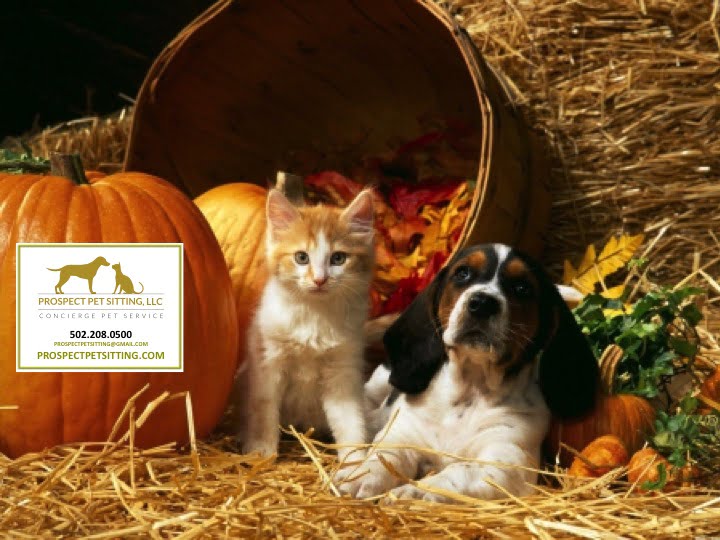We may not want the warm weather of summer to vanish and even though we are experiencing some unusually high temperatures this October and November, the leaves are starting to fall to the ground and there is a chill (or at least a lower dew point and lower humidity) in the air.
Fall officially began September 22nd. A break from not only the summer heat, but also from the potential dangers and hazards to our pets that accompany it may be a welcome change. However, as we enter the fall and winter seasons, other potential hazards to our furry children are a concern. Following are some ideas to consider in caring for your pet(s) this fall as published in Multibriefs by Janet Piercy and reported through Pet Sitters International.
Kristina Cooper is a registered veterinary technician from the Ontario Association of Veterinary Technicians and part of the Public Health Rabies Response Program. She points out, “A pet who stays mostly indoors may have different risk factors than those who are often exposed to other animals or those who have an active outdoor lifestyle. Rabies should always be considered, as the disease is fatal for both animals and people and is required by law in most places regardless of a pet’s activity.” Cooper also mentions the importance of keeping pets warm and dry as the temperature starts dropping as well as the importance of visibility stating, “With shorter days of light, it is also important to make sure your pets are visible in the dark when out on their evening walks. Consider reflective collars or leashes.”
Consulting your veterinarian for medication to ensure your pet is protected from fleas and ticks is also highly recommended. Fleas and ticks, which can be acquired anywhere another animal has been, can cause skin irritation and redness. Contracting Lyme disease is the worst-case scenario.
The director of Shelter Health and Wellness for the Ontario Society for the Prevention of Cruelty to Animals (OSPCA), Dave Wilson, reminds pet owners to take precautions to ensure our pets are happy, healthy and safe when the snow starts falling as the winter holidays approach. Wilson also mentions that holidays can be a time of anxiety for your pets, especially with family and friends in the home.
OSPCA admonishes the importance of not letting your company feed your pet(s) from the table as foods may contain too much fat, protein and sugar which could cause sickness. Recommended foods to keep out of reach include chocolate, raisins, grapes, bones and rich/fatty foods. Wilson also suggests keeping your pet(s) in a different room during meal time.
Tips for keeping your pet(s) happy and healthy during the fall months are as follows:
- Talk to your veterinarian and ensure your pet(s) is(are) up to date on all vaccinations including rabies shot as well as flea and tick medication.
- Be cautious of other wildlife, e.g., snakes, skunks, etc., preparing for hibernation. Most wildlife tends to be out the same time you are taking your pet for an autumn walk as it gets dark earlier during the fall.
- Keep holiday decorations and food out of your pets’ way so they will not be tempted to chew and eat products that are potentially toxic.
- Keep your lawn and garden safe. Watch out for fertilizers, pesticides and poisonous plants. Mushrooms can be extremely toxic to animals if consumed.
- Purchase a reflective collar or leash for pets so they are visible during evening walks.
- Keep the location and number of the nearest emergency veterinary clinic on hand.
Our furry children are an important part of our family. Let’s ensure their happiness and well being this fall/winter season by preplanning for emergencies and being cautious of their safety.


